Kansas state (USA)
Location
Kansas is a state in the central United States, known as the “Sunflower State.” It is located in the very heart of the country in the Great Plains region. The state borders Nebraska to the north, Missouri to the east, Oklahoma to the south, and Colorado to the west. Kansas covers an area of approximately 213,000 square kilometers, making it one of the medium-sized states.
The state capital is Topeka, though its largest city and economic hub is Wichita. Geographically, Kansas lies in what is often called the “wheat belt,” due to its extensive agricultural output, especially wheat cultivation.
The rivers and lakes in Kansas include the Arkansas and Kansas Rivers, both vital natural resources and waterways for the region. The landscape is predominantly flat, but the western part of the state features some hills that gradually transition into rocky areas.
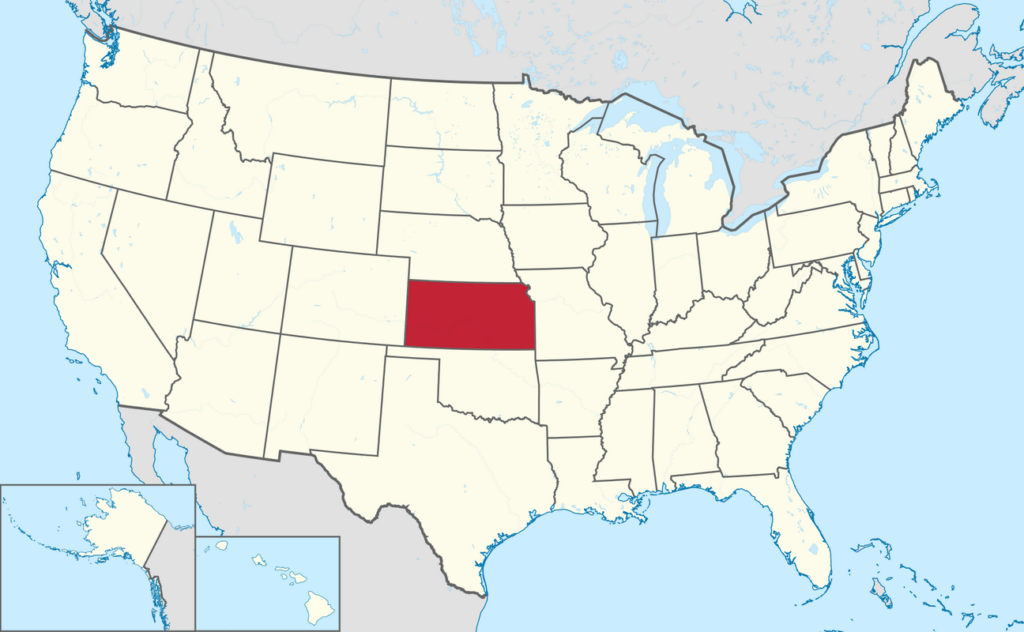
Climate and Landscape
Kansas experiences a climate that ranges from continental in the east to semi-arid in the west. Summer temperatures often reach up to +32°C, while winter averages drop to about -6°C. However, temperatures can vary significantly between seasons. Kansas is known for frequent thunderstorms, often accompanied by hail, lightning, and strong winds. Unfortunately, it is also infamous for its tornado risks, earning it the nickname “Tornado Alley.”
Rainfall decreases from southeast to northwest, with the eastern regions receiving about 1000 mm annually, while the western parts get as little as 400 mm. Autumn and spring are the most pleasant seasons, with mild temperatures and vibrant natural colors.
The landscape of Kansas is characterized primarily by plains and prairies. It is one of the most open states, offering breathtakingly endless horizons. The western part of the state features gentle hills, while rivers like the Arkansas and Kansas provide fertile soils. Additionally, Kansas boasts scenic natural reserves such as the Flint Hills, where prairies remain preserved in their pristine state.
Population
Kansas is home to over 2.9 million people (as of 2023). The state has one of the lowest population densities in the U.S., with about 14 people per square kilometer. Most of the population resides in cities, the largest of which are Wichita, Overland Park, and Kansas City. Wichita is the largest city and an important industrial hub, while Kansas City is known for its cultural diversity and developed infrastructure.
The racial composition of Kansas is predominantly White, accounting for about 77% of the population. Other ethnic groups include Hispanic or Latino (12%), African American (6%), and representatives of Asian and Indigenous peoples. Due to migration, the state has become more multicultural over recent decades.
A distinctive feature of Kansas is the significant share of rural residents. Many are engaged in farming, cultivating wheat, corn, and soybeans. Despite the remoteness of some areas, advancements in technology and connectivity help maintain ties with larger cities and global markets.
Kansas is also known for its hospitality. Many locals take pride in their openness and willingness to help, creating a welcoming atmosphere for newcomers.
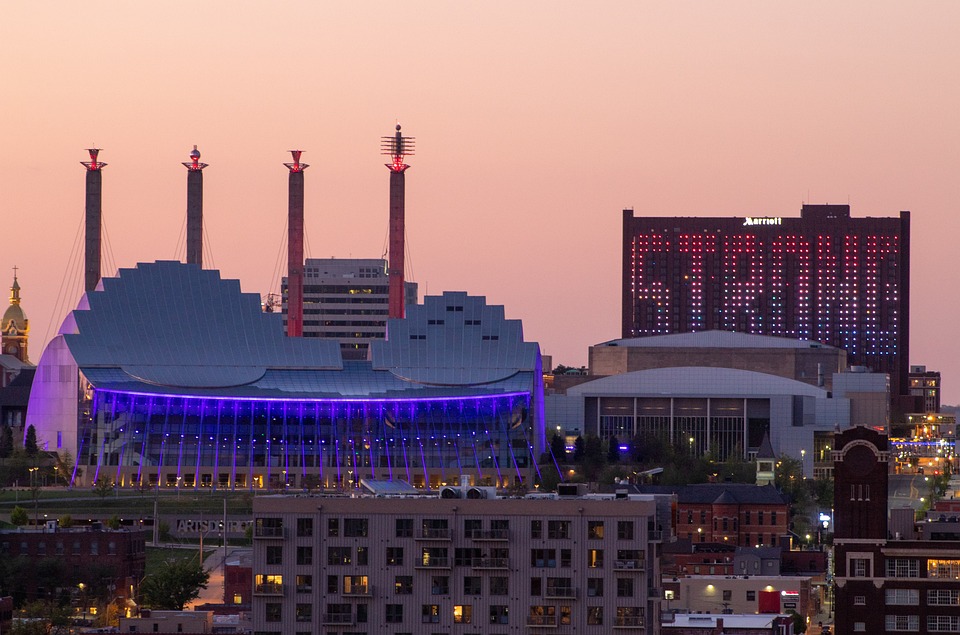
Crime
The crime rate in Kansas is average compared to other U.S. states. In 2023, the state reported approximately 350 incidents per 100,000 residents, placing it near the middle of the national ranking. The most common crimes are theft and property-related offenses, while violent crimes, including assaults, remain relatively rare in most regions.
Kansas City, located on the border with Missouri, is known for slightly higher crime rates, particularly in northern areas. Meanwhile, smaller towns and rural areas have significantly lower crime levels. The safest cities in Kansas include Overland Park, Leawood, and Lenexa.
The state is actively working to reduce crime levels. Police and government programs focus on addressing crime through improved education opportunities, increased employment, and community initiatives.
It is worth noting that most Kansas residents consider their state safe to live in, provided they avoid certain areas in major cities. Newcomers are advised to familiarize themselves with local safety guidelines and housing recommendations.
Economy
Kansas is a key agricultural state known for its production of wheat, corn, and soybeans. It ranks among the top states in the U.S. for agricultural exports. Alongside its farming industry, Kansas boasts a well-developed industrial sector, including aviation, automotive manufacturing, machinery production, and food processing.
In 2023, the median household income in Kansas was approximately $68,000 per year, slightly below the national average. The unemployment rate remains one of the lowest in the U.S. at around 3.2%, thanks to a robust agricultural sector and the growth of small businesses. The state minimum wage is currently $7.25 per hour, aligned with the federal standard, although many employers offer higher wages depending on the industry.
Kansas’ primary economic hubs include Wichita, a center for aerospace manufacturing, and Kansas City, known for its financial sector and goods production. In rural areas, the economy predominantly revolves around farming and food processing.
Due to its strategic central location, Kansas also features a highly developed transportation infrastructure, including railroads, highways, and international airports, making it a vital logistics hub.
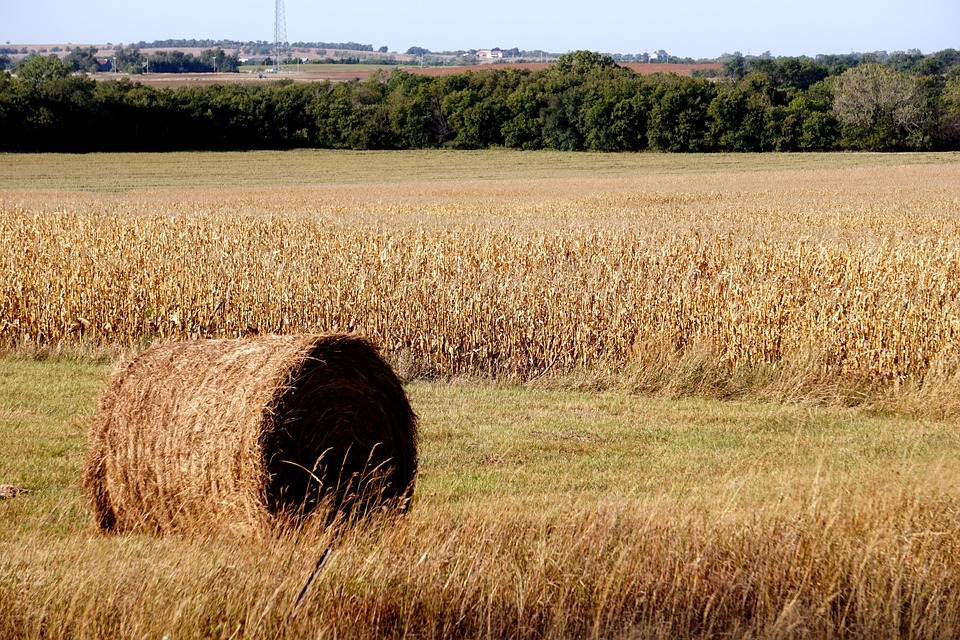
Kansas for Business
Kansas is an attractive state for business due to its central location, low commercial real estate costs, and access to well-developed transportation infrastructure. It serves as a major logistics hub, with extensive road and rail networks connecting the East and West Coasts.
Tax Environment
Kansas offers a moderate tax environment for businesses with some specifics:
- Corporate Tax: A 4% rate applies to the first $50,000 of profit, with a 7% rate for profits exceeding that amount.
- Sales Tax: The base rate is 6.5%, but with local taxes, it can go up to 10%, impacting retail businesses.
- Property Tax: Among the highest in the nation, which may deter large-scale manufacturers.
- Investment Incentives: New businesses may qualify for tax credits based on job creation or infrastructure investments, depending on the region.
Laws and Regulations
Kansas legislation supports small and medium enterprises:
- Ease of Registration: Companies can be registered online, typically within 1–3 days.
- Small Business Protections: The state offers incentives for entrepreneurs working in rural areas or engaging in innovation.
- Labor Laws: As a “right-to-work” state, employees are not required to join unions, reducing operational costs for businesses.
Opportunities
Kansas has several strategic business sectors:
- Aerospace: Wichita is a global aviation hub, creating opportunities for suppliers and maintenance services.
- Agriculture: Investors can leverage the highly productive soils for agricultural startups or processing products.
- Technology and Bioengineering: The government actively attracts companies in these sectors through grants and partnerships.
Risks
- High Property Taxes: This can be a barrier for large manufacturing facilities.
- Tornadoes: Natural risks in the region may require additional insurance costs.
- Youth Exodus: Many young professionals move to larger metropolitan areas, complicating the search for skilled labor.
Real Estate
Kansas’ real estate market offers affordable prices for both rentals and purchases, making the state attractive to families, students, and young professionals. The average home price in Kansas is around $200,000, significantly below the national average. This provides opportunities for homeownership even for those just starting their careers.
Rentals
Rental housing in Kansas is also affordable:
- One-bedroom apartment in the city center: $800–1,200 per month.
- Homes in suburbs or outskirts: $900–1,500, depending on the number of bedrooms.
Cities like Wichita and Kansas City offer a wide range of options for those seeking modern housing within a reasonable budget.
Purchases
Kansas also attracts those looking to buy homes. With low land costs and less competition, it’s an advantageous place for purchasing real estate. Most homes in the suburbs have spacious lots, making them ideal for families.
Investment
The Kansas real estate market also presents interesting opportunities for investors. With economic growth, low unemployment, and affordable prices, many see Kansas as a lucrative place to purchase commercial or residential properties. Cities are expanding, especially in the suburbs of Kansas City and Wichita, with new shopping centers, office buildings, and residential developments.
Challenges
Despite its advantages, there are a few challenges:
- Rural areas have significantly lower housing demand, so selling property there can take longer.
- The risk of natural disasters, especially tornadoes, may require additional insurance costs.
- Property taxes in Kansas are above average, potentially affecting the overall cost of homeownership.
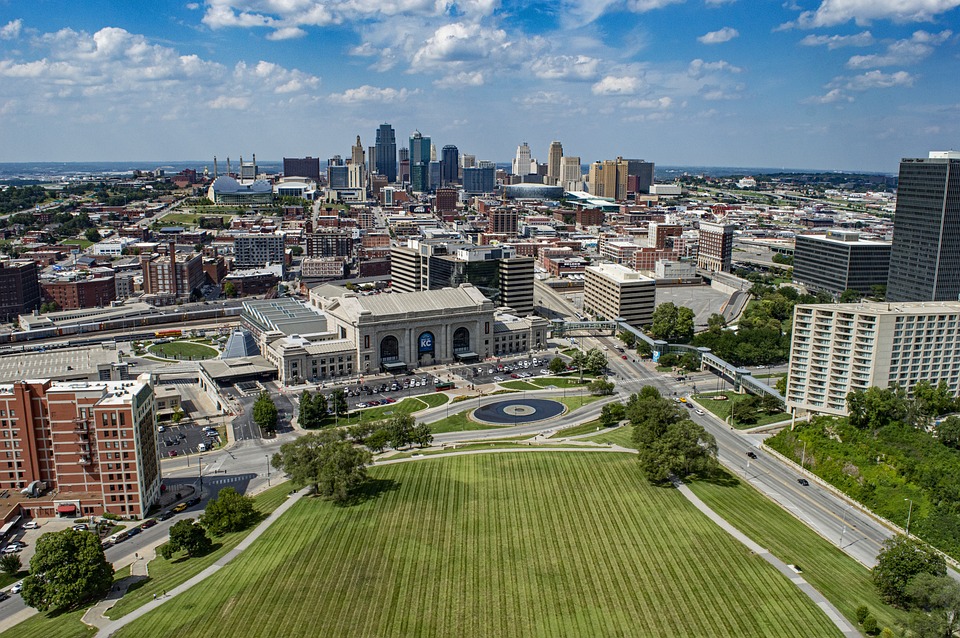
Ecology
Kansas boasts predominantly clean environmental conditions, though certain aspects of its ecological state raise concerns. Thanks to its largely rural nature, air quality remains high, particularly in less urbanized areas. Most industrial facilities are concentrated in cities like Wichita, helping to preserve the cleanliness of the countryside.
However, agricultural development carries environmental costs. The extensive use of pesticides and herbicides can affect soil and water quality, particularly groundwater, which serves as a vital source of drinking water across much of Kansas. Special attention is given to water conservation, as rivers like the Arkansas provide not only irrigation but also water supplies for major urban centers.
The state also focuses on restoring natural landscapes, particularly prairies, which have been significantly affected by agricultural expansion. Preserves like Flint Hills protect the unique ecosystems of the Great Plains region and play a crucial role in maintaining biodiversity.
Unfortunately, Kansas frequently faces extreme weather conditions, including tornadoes and droughts, which can have devastating impacts on nature and economic activities. These natural phenomena underline the need for careful planning and the implementation of protective environmental measures.
Efforts in Kansas aim to reduce harmful emissions and support environmental conservation initiatives, such as the development of renewable energy. The state is among the U.S. leaders in wind energy utilization, reducing dependence on fossil fuels and fostering sustainable development.
Landmarks
Kansas offers a wealth of attractions reflecting the state’s natural beauty and historical and cultural richness. Here are some highlights:
- Flint Hills: One of the last natural prairie areas in the U.S., featuring the Flint Hills Discovery Center, which educates visitors about the Great Plains’ flora and fauna.
- Tallgrass Prairie National Preserve: Located nearby, this preserve shows how the plains looked before European settlers arrived. Hiking trails allow visitors to enjoy scenic views and wildlife.
- Cosmosphere in Hutchinson: One of the world’s largest space museums with unique exhibits, including rockets and space capsules, offering an in-depth look at space exploration history.
- Combat Air Museum: Located in Topeka, this museum highlights the history of military aviation, with over 30 aircraft and numerous artifacts on display.
- Santa Fe Trail: A historic route used by settlers and traders in the 19th century. Along the trail, numerous landmarks and plaques help reconstruct the journey of that era.
- Gypsum Hills: Known for red rocks and canyons, this region resembles the desert landscapes of the western U.S. and offers opportunities for hiking, horseback riding, and enjoying the scenery.
- Granite Fountain in Kansas City: Kansas City is famous for its fountains, with the Granite Fountain serving as a symbol of the city and a popular spot for strolls.
- Coronado Heights: A restored stone castle on a hill near Lindsborg, perfect for picnics and enjoying panoramic views.
- Boot Hill Museum: Located in Dodge City, this museum narrates the era of the Wild West, including cowboys, duels, and the colorful life of that period.
Why People Move to Kansas
Kansas attracts new residents with its affordability, high quality of life, and friendly atmosphere. For many, relocating to this state offers a chance to escape the hustle and bustle of big cities and find a balance between urban convenience and rural tranquility.
One of the key reasons is the low cost of living. Housing prices here are significantly below the U.S. average, making Kansas appealing to young families and those looking to save or invest in homeownership. Additionally, low costs for utilities and essential goods add to the appeal.
Kansas provides a peaceful lifestyle, highly valued by those seeking safety and stability. Small towns experience minimal crime, creating an ideal environment for family life. Moreover, the local residents are known for their hospitality, making it easier for newcomers to settle in.
The state is also appealing due to its nature and open spaces. Majestic prairies, scenic landscapes, and vast horizons create a unique sense of freedom. There are many opportunities for outdoor recreation, from exploring national parks to visiting historic landmarks.
For job seekers, Kansas is a promising choice thanks to its strong economy in agriculture, aviation, and technology. Low unemployment rates and a stable job market make the state attractive to professionals across various industries.
However, living in Kansas does come with challenges. One major drawback is the risk of natural disasters, such as tornadoes, which are common in the region. Younger residents may find limited entertainment and cultural opportunities compared to larger cities. Additionally, property taxes can be high for new homeowners.
Despite these drawbacks, Kansas remains a popular choice for those who value quality of life, affordability, and a slower pace. It’s a state where traditional American values and modern opportunities come together in harmony.
Potential Drawbacks of Living in Kansas
While Kansas has many advantages, some aspects of living here may be inconvenient or challenging for certain groups. Below are the main drawbacks to consider:
- Natural Disasters:
Kansas is located in the “Tornado Alley,” meaning the region frequently experiences severe storms and tornadoes that can cause significant property damage and pose life risks. Additionally, droughts are not uncommon, particularly during summer months. - Relative Isolation:
Some areas of Kansas are quite far from major cities, which can limit access to top-tier medical facilities, cultural events, and large shopping centers. Young people often move to larger metropolitan areas due to a lack of entertainment and career opportunities. - Limited Employment Diversity:
The state’s economy heavily relies on agriculture and aviation. Compared to other states, Kansas may have fewer options for those seeking jobs in high-tech industries, arts, or major financial sectors. - High Property Taxes:
While housing is affordable, property taxes are higher than the national average, which could be a significant factor for potential homeowners. - Challenging Climate:
Kansas experiences hot summers and cold winters. Additionally, the winds typical of the plains can make winter feel harsher and summer heat more oppressive. - Limited Public Transportation:
Public transportation is virtually non-existent in smaller towns and rural areas, meaning a car is a necessity for most residents. - Lack of Cultural Diversity:
Despite its overall friendliness, smaller communities may feel somewhat isolated culturally, with limited representation of diverse ethnic groups or events.
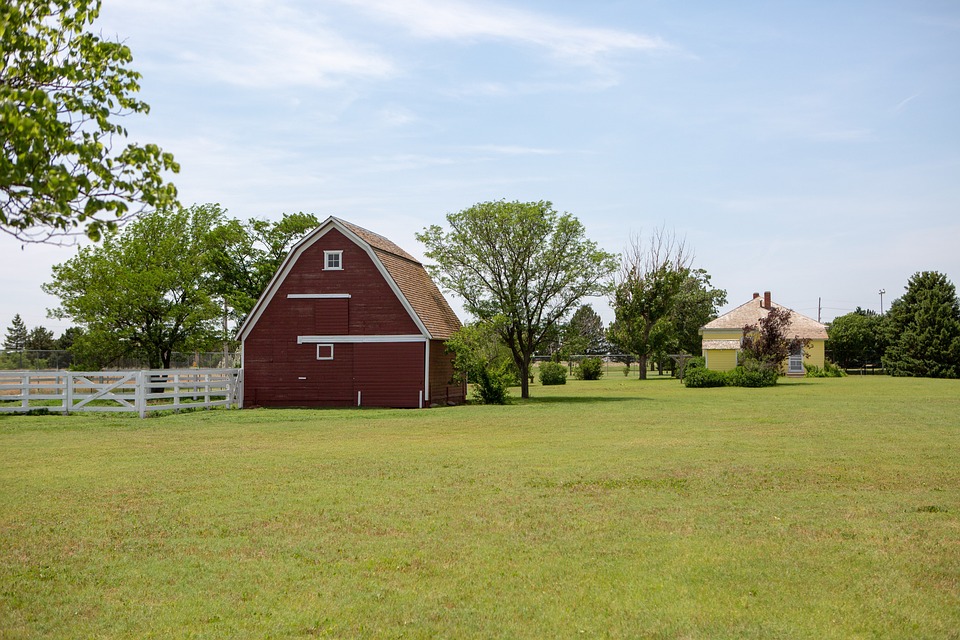
What Else to Know About Life in Kansas for Newcomers
Kansas is a state with its unique culture, traditions, and laws that may surprise newcomers. Here are some interesting facts, local rules, and nuances of life to consider before moving.
Fun Facts About Kansas:
- The Sunflower State:
Kansas is unofficially known as “The Sunflower State,” and for good reason. During the season, sunflowers bloom across vast areas, creating stunning landscapes. In fact, the sunflower is the state’s official symbol. - The Heart of America:
Geographically, Kansas is located almost at the center of the U.S., making it an ideal hub for transportation and logistics. This means faster delivery times and shorter trips across the country compared to coastal states. - A Meteorological Haven:
Kansas is one of the best states for studying meteorology due to its sharp weather changes and frequent natural phenomena like tornadoes.
Quirky Laws:
- No Leaving Knives on Grass:
Kansas has an unusual law prohibiting leaving knives on grass, stemming from concerns about injuries to livestock and damage to pastures. - Duck Feeding Restrictions:
In Topeka, an old law prohibits feeding ducks in public parks. While rarely enforced, this law still exists. - No Parking in Wheat Fields:
Parking vehicles in wheat fields is strictly forbidden to prevent crop damage.
Unwritten Social Rules:
- Kindness Above All:
Kansas is known for its friendliness. It’s expected that you greet your neighbors, even if you’re meeting them for the first time. Not doing so might be considered rude. - Respect for Farmers:
Agriculture is the backbone of Kansas’ economy, and farmers are held in high esteem. Showing respect for their work is an important part of the local culture. - Plan Ahead:
Since towns and villages can be far apart, planning your shopping or trips is essential. Newcomers should get used to preparing routes and supplies in advance.
Tips for Newcomers:
- Be Ready for Windy Weather:
Kansas is one of the windiest states in the U.S. Warm clothing and sturdy umbrellas are must-haves during winter. - Limited Public Transport:
While major cities like Wichita and Kansas City have developed public transit systems, small towns and rural areas require a car for convenience. - Check the Weather Forecast Often:
Sudden weather changes are common in Kansas. Always keep a raincoat or sunscreen handy, depending on the season.
Table of Contents